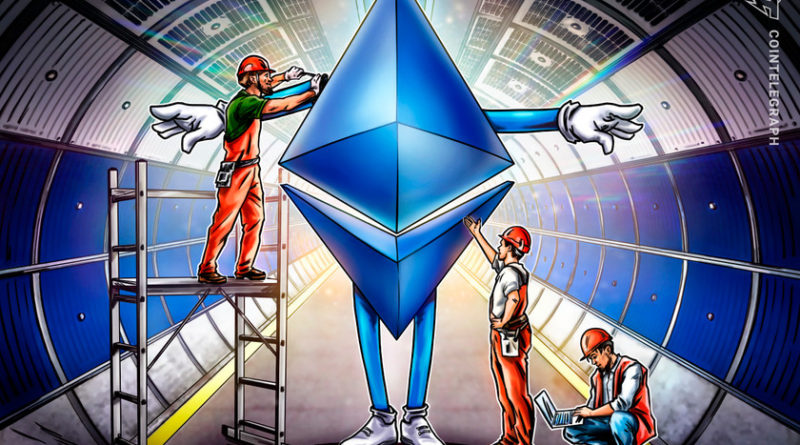Will the Ethereum 2.0 update reduce high gas fees?
Ethereum’s gas fees have long been an issue among its users. Will Ethereum 2.0 finally eliminate this problem?
Ethereum’s high gas fee and its impact on the platform’s scalability
Purpose of Ethereum 2.0
The primary goal of the Ethereum 2.0 update is to improve scalability so that the network can handle more transactions without delays or high fees.
While the full effects of the update will not be felt until it is fully rolled out, some of the possible use cases for Ethereum 2.0 include:
- Supporting the large-scale enterprise adoption of blockchain technology in private corporations and businesses;
- Creating more decentralized autonomous organizations (DAOs) and governance models based on smart contracts and trustless interactions;
- Ethereum token launches that will allow new projects to fundraise and launch their own tokens on the Ethereum network;
- The further expansion of nonfungible tokens (NFTs) and other digital assets that can be stored on the Ethereum blockchain; and
- Improved support for decentralized finance (DeFi) platforms and DApps is expected to be widely used by crypto enthusiasts and the broader public.
In addition to these benefits, it is also likely that Ethereum 2.0 will enable a variety of new use cases that are not possible on the current network, such as:
- Distributing tokens that represent ownership rights as a method of managing royalties in the music industry;
- Creating a decentralized AI (artificial intelligence) ecosystem that will allow users to train and monetize their own machine learning models;
- Facilitating safe and inexpensive cross-border payments;
- Allowing supply chain managers to track product delivery without fear of tampering;
- Providing a decentralized platform for gaming and predictive markets; and
- Increased privacy and the capacity to store large amounts of data, which can be particularly helpful for storing sensitive information such as medical records and financial data.
While there’s still time before the update is fully rolled out, the benefits it promises to bring are significant and could have a major impact on the way businesses and individuals use blockchain technology in the future.
The Ethereum platform’s popularity
The blockchain network’s popularity is expected to grow once Ethereum 2.0 is released.
Ethereum 2.0 will offer increased scalability, security and efficiency for businesses and individuals looking to take advantage of blockchain technology. Ethereum is currently one of the most well-known cryptocurrencies, alongside Bitcoin (BTC), with nearly 4 million wallets actively holding ETH as of February 2022.
The blockchain continues to be the place where most DeFi and NFT activities happen, with new DApps and projects being launched on the platform each day. According to analysts, Ethereum currently has 70% of all DeFi transactions in the cryptocurrency market, and its blockchain is used to support the majority of NFT and gaming projects.
The number of transactions on the Ethereum network
The average number of transactions on the Ethereum network is currently 1.1 to 1.5 million transactions per day.
These numbers are expected to increase exponentially after the launch of Ethereum 2.0, as it will allow significantly more transactions to be processed per day. At the moment, the network can only handle 15 transactions per second.
Ethereum 2.0 aims to increase this exponentially to about 150,000 by the time the upgrades are fully rolled out. If this becomes a reality, Ethereum will undoubtedly become one of the fastest and most scalable blockchains in existence, which should further increase its popularity.
Addressing scalability and high gas cost concerns with Ethereum 2.0
Scalability has always been one of Ethereum’s biggest challenges. This is especially true for developers seeking to build DApps and DeFi platforms on the blockchain, as transaction costs can be prohibitively high.
However, with the launch of Ethereum 2.0 (which introduces a new PoS consensus mechanism and shard chains), it will finally be possible to scale the network in a way that significantly reduces costs and facilitates faster transactions:

Tips and tricks to spend less gas fees on Ethereum
There are several ways you can reduce or even eliminate these costs when spending on gas fees on Ethereum.
- Use wallets that support batching: Batching is a feature offered by some wallets that allows you to group multiple transactions into one, thereby reducing the amount of gas you need to spend.
- Use ERC20 tokens: ERC20 tokens are digital assets that run on the Ethereum blockchain and can be used in place of ETH when paying for gas. This is because they often have much lower transaction fees than ETH, itself.
- Use a gas price calculator: Gas prices fluctuate frequently, so it’s important to use a gas price calculator to ensure you get the best possible price for your transaction.
- Use a gas tracker: A gas tracker is a tool that allows you to monitor the current gas prices on the Ethereum network in real-time. This can help ensure you’re always aware of the latest prices.
- Use a gas station: A gas station is a website that allows you to compare the gas prices of different ETH wallets to find the best one for your needs.
By following these tips, you can significantly reduce the amount of money you spend on gas when using Ethereum. This will help make it more affordable for you to use the network and participate in DeFi and other activities until such time that Ethereum 2.0 has fully launched.
How are Ethereum’s gas fees determined?
The amount of gas required for a transaction is determined by the “gas price” set by the sender.
The gas price is usually expressed in GWEI, a fraction of Ethereum (ETH). Gas fees vary depending on the number of miners available, as well as the current projects and decentralized applications (DApps) running at the same time.
You can also decide on the amount you are willing to pay for the gas. For example, if you want a transaction to be done quickly, you can choose to pay a GWEI higher than the current market price. On the other hand, you can also select a lower gas fee if you are willing to wait for the miners to process your transaction.
What is an Ethereum gas fee?
Every transaction on the Ethereum network costs a certain amount of “gas,” which is essentially the fee paid to miners for processing the request.
The amount of gas required depends on the complexity of the transaction. For example, a simple transfer of ETH from one address to another requires less gas than a contract deployment or a token sale.
Currently, the network is only capable of processing a limited number of transactions per second, leading to high transaction fees and delays in processing. The Ethereum 2.0 update is expected to address these issues by improving scalability and reducing the amount of gas required for each transaction.
What is the Ethereum 2.0 update?
Also called Eth2 and Serenity, Ethereum 2.0 is an upgrade to the Ethereum network that promises to bring several improvements.
Slated improvements to the network include reduced transaction fees, improved speed and better scalability. The update is currently in development and is expected to be rolled out in stages over the next few years.
One of the key features of Ethereum 2.0 is sharding, a way of splitting up the workload so that transaction requests can be processed in parallel. In addition, the Ethereum 2.0 update will make use of proof-of-stake (PoS) rather than proof-of-work (PoW) when validating transactions and blocks.




